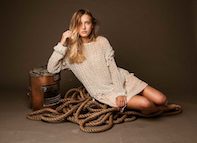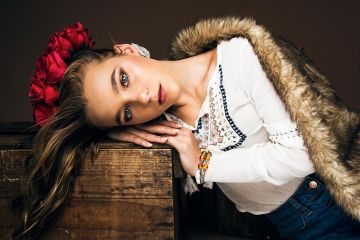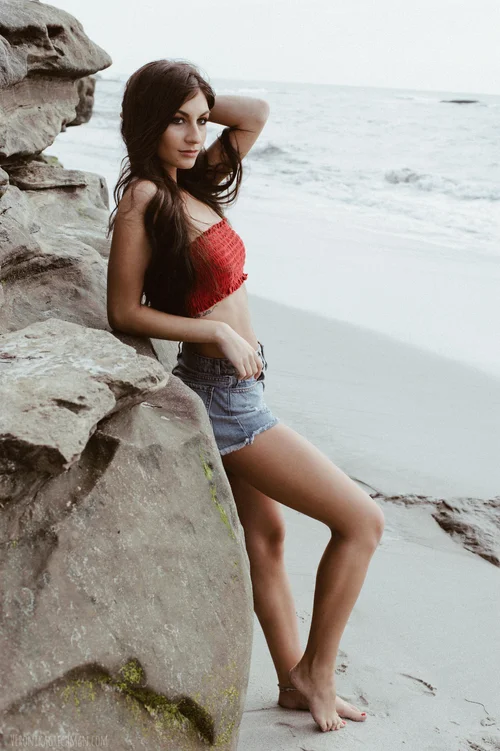The Newbie's Overview to Product Photography
If a picture is worth a thousand words, a magnificent product image deserves a thousand internet site visits. Although I do not have information to support that declaration (yet), product photography can be incredibly important to your ecommerce web site method.
To reach your target market members who like acquiring online, you likewise need to give your target market clear, distinctive images of your items.
But product photography isn't as straightforward as aiming and also shooting. Even the most basic products require the proper tools, https://edwinzspu428.hpage.com/post1.html lights, and room to generate beautiful images that market consumers right from the acquisition page.
6 Product Photography Tips ( as well as Examples) for Taking Photo That Sell
Right here are the tips, instances, and supplies you'll need to properly photograph as well as market your items in such a way that makes your site visitors and also leads want to transform.
1. Do not be afraid to use your mobile phone's camera.
This is the part where I'm supposed to convince you to buy a campaign photography gold coast premium, 50-megapixel (MP) camera with a 100-millimeter screw-on lens. Yet I'm not going to do that.
If you already possess a video camera that fits this description, take advantage of it. However, for numerous types of items, it's completely acceptable to shoot product photos on a smart device.
More recent smartphones flaunt powerful video camera lenses and also settings that enable you to maximize your shots for the different kinds of light as well as environments you might fire in.
If you require extra persuading, just have a look at Apple's Shot On An iPhone project as well as the photos that have actually resulted from it throughout the years such as this:

2. Fire from a tripod for photo consistency.
Before describing tripods, I'm obligated to start with a principal guideline: Don't prop your phone versus something tough to intend your lens towards the subject.
It's just too simple for this makeshift setup to glide around throughout the shoot as well as create inconsistencies in your pictures' look. If you relax your video camera on, claim, a pile of publications, simply make sure this plan does not transform over the course of the shoot.
There's no injury in holding your camera yourself when firing simply a couple of product images for your ecommerce web site. Yet as your company expands, as well as you take extra images of even more items, it can be challenging to systematize the product's positioning in each photo when firing handheld.
To make certain uniformity across your items, you'll require a tripod. And also fortunately, getting one isn't constantly the large, industrial-sized investment it made use of to be.
Right here are 2 kinds of tripods to take into consideration.
Typical vs. Adaptable
This is a custom tripod-- there are traditional tripods offered for both cameras and also smartphones.
A adaptable tripod can be controlled in a variety of ways. You can flex its legs as well as place it on different surface areas to obtain the angle you require.
Mobile Grip
There's often a screw on the top of your tripod which attaches to your video camera to hold it in place. The underside of many professional-grade video cameras has a screw opening just for this purpose, yet mobile phones can use the adhering to adapter:
The adapter grips the sides of your mobile phone and can screw into either kind of tripod, allowing you to operate the electronic camera controls with the phone display facing exterior and toward you.
Once you determine which mount you'll need, establish it up before your product, and also consider putting 3 items of tape on the ground to mark where you wish to maintain each leg of your tripod over the course of the shoot.
3. Choose natural light or fabricated light.
Never ever underestimate exactly how certain types of light can improve (or prevent) your product photography. Keep in mind, customers get the best look at an product face to face, where they can see whatever they require to before investing in. The best lighting setup helps you reveal those essential decision-making product features when all site site visitors need to go on is a photo.
A single illumination arrangement could not help every product-- a lights setup that benefits some products might compromise the look of others.
There are 2 kinds of light you can select as your major light source: all-natural and also synthetic light.
All-natural Light
All-natural light describes sunshine-- simple as that. It's also called "soft light" since the sun casts a larger, softer series of light than, say, a lamp beaming directly on the product. Ecommerce product shots prosper in all-natural light if:
The product is shot outside or indicated to be used outside.
The product is used by, endured, or shot with a individual (people have a tendency to look far better in all-natural light).You're trying to stress the product's surroundings, as opposed to specific features of the product.
Here's an instance of a shot utilizing all-natural light:
Fabricated Light
Artificial light consists of candles, fire, and also more commonly, light bulbs. It's also described as " difficult light" because it generates a smaller sized however more focused light surface area. This sort of light deals with products with physical details that need to be highlighted to excite an online shopper.
As a general guideline, stay with simply one sort of light per photo-- all-natural or fabricated. Including natural light to an artificially lit photo can soften a product that's implied to festinate, and also adding synthetic light to a normally lit photo can hone a product that's indicated to look soft. You do not intend to enter your very own means.
4. Fill up or jump your light to soften darkness.
Whether you utilize natural light or artificial light, you'll need to minimize the shadows that any kind of prospective difficult light casts on the contrary end of a product.
There are three means to do this:
Fill Light
Consist of an additional, less-intense light source to supplement your primary light. This added light is called your fill light and also is utilized as a counterbalance to soften the natural shadow your primary light creates behind an object.
To do this, position your fill light contrary your primary light so your product sits in between both lights.
Flashbulb Bounce Card
A bounce card, or reflector card, is a tiny card that " shows" or " jumps" the major light back onto the surface beneath your product to reduce darkness.
Some bounce cards connect to the flashbulb of a professional camera lens to diffuse the light from the electronic camera's flash. This card sprinkles a softer light onto the subject from above your collection-- rather than straight at it-- so you don't have long shadows trail behind the item you're firing.
Standalone Bounce Card
If you're firing from a smart device, a flashbulb bounce card isn't an alternative, since you don't have a physical flash you can affix it to. Rather, make your very own standalone bounce card placed opposite your major light.
For novices to product photography, this bounce card can properly replace your fill light, which counters the hard light from the cam flash or lamp that's facing towards the front of your product.
5. Make use of a sweep or portrait mode to emphasize the product.
There isn't one ideal way to position your product, lights, and also jump cards-- they can alter significantly relying on your history. Yet do not choose a background based on what's easiest to develop. Histories must resemble just how you desire your purchasers to regard your product when seeing it online.
Think about first whether you 'd such as a white background or a more dynamic, real-world history. There's an very easy means to achieve every one.
White Background: Move
For white backgrounds, it's not as simple as setting up a table against white drywall. Also smart device electronic cameras can pick up little acnes on a white wall that you would not observe with the naked eye. To record a best white background with no edges or acnes, make use of a move.
A sweep is a huge bendable sheet of paper, whose lower work as the surface area underneath your product and after that contours up into a white wall behind the product.
On video camera, the sweep's curve is unnoticeable, emphasizing essential product details and also enabling the item to own all of a web site visitor's interest.
Real-World Background: Portrait Mode
Dynamic, real-world histories are really appealing when capturing items that have a details usage or are being designed by a person-- as you saw in the picture of the brief-case previously in this guide.

Offer your product depth and also focus with picture setting, a image setting on a lot of specialist electronic cameras, and likewise available on several brand-new mobile phones. This setting obscures the history so the context of the product is clear yet not completing versus the product itself.
Below is a extremely incredible photo of a HubSpot pen absorbed picture mode on a Google Pixel 2 (I took this picture myself). You can inform the pen sits on a workdesk with a computer system behind it, yet the pen is still the focal point for visitors:
6. Fire a variety of images.
My last ecommerce photography pointer to you is to not stop at one photo per product. Equally as your consumers look, hold, use, as well as even try on merchandise in a store, your web site should fire a selection of images to mimic this extremely experience.
If you're firing clothes, as an example, record the garment of garments alone-- that is, expanded on a white surface area-- in addition to on a mannequin whose color contrasts the shade of the product.
After that, for added photos, have the apparel modeled on a individual, permitting you to take photos of the product from the individual's different positions and also angles.
Product Photography Set-Up
Next off, let's summarize what we just obtained-- below's a listing of quick product photography set up pointers that you can describe and share on your team:
• Choose a video camera-- whether that means using your mobile phone.
• Obtain a tripod that works for your video camera of selection.• Pick natural or man-made lighting-- consider which alternative is best for your product and also environment.
• Determine whether you'll fill up or bounce light.• Select sweep or portrait mode.
• Take a number of various photos to offer your audiences selection.
Get Started With Your Product Photography
